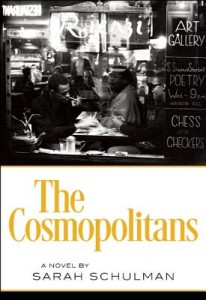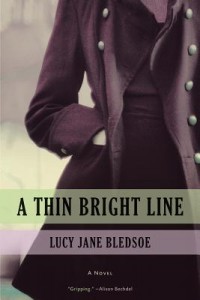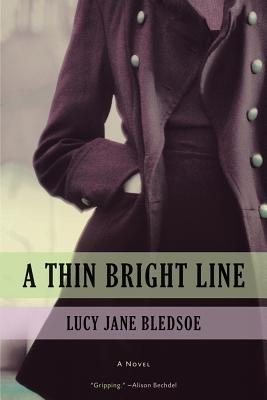 The Cosmopolitans
The Cosmopolitans
by Sarah Schulman
Feminist Press. 296 pages, $15.95
 A Thin Bright Line
A Thin Bright Line
by Lucy Jane Bledsoe
Wisconsin. 336 pages, $26.95
AS LUCK WOULD HAVE IT, two big, dramatic novels about queer life in the 1950s—both set, at least in part, in Greenwich Village—have recently been published. Both books are by major lesbian writers who were born in the postwar America they describe, and both discuss their personal connections to their subject matter. Sarah Schulman and Lucy Jane Bledsoe both have the finesse to take their readers back in time while avoiding the pitfalls of amateur historical fiction (nostalgia, inaccuracy, oversimplification).
Schulman’s The Cosmopolitans is loosely based on a French novel of the 1840s, Cousin Bette by Honoré de Balzac, in which a middle-aged spinster, exiled to Paris from her home in the provinces many years before, plots the downfall of the extended family that rejected her. Schulman has kept the French names of Balzac’s characters while making them distinctly American. The central relationship is between Bette and Earl, social outsiders who live in exile from their original families and who have little in common aside from being tenants in the same building. Bette was disowned by her family in the 1920s after being jilted by a dishonest lover, and Earl, as a man-loving actor and a “Negro” from the South, can’t find a safe space anywhere. Their friendship (“for life,” as Bette points out to an interloper) is a type of relationship rarely seen in current fiction. The purity of this bond shines against the grit of working-class urban life.
As the author explains in an afterword on style, this novel was influenced by the “kitchen-sink” realism of the 1950s, yet the dialogue sometimes suggests vintage Hollywood and grand opera. (Schulman has explained that this novel was originally conceived as a play, and it has an “intermission.”) Characters express their emotional truth with startling eloquence, much as the author does in her nonfiction on moral issues. The reader is reminded that art, “realistic” or otherwise, is usually better organized than life, which is why both fiction and advertising can hold our attention.
A Thin Bright Line takes place in some of the same territory, but it is a fictional reconstruction of the last decade in the life of the author’s lesbian aunt, for whom she was named: Lucybelle Bledsoe from small-town Arkansas. In a lengthy postscript, the author outlines her methods of discovering as much as she could about a remarkable science editor and possible novelist (though her novel was never found) who died in a house fire at age 43, in 1966. The possibility that the original Lucybelle was murdered is troubling and not completely beyond reason, considering government policy regarding “homosexuals” (not to mention women with access to classified information) as security risks during the Cold War. However, the author Lucy Bledsoe has chosen to accept the official verdict, that the fire was an accident caused by a smoldering cigarette. This approach allows her to focus on her aunt’s life rather than her death. It seems likely that the original Lucy Bledsoe would prefer to be remembered that way.
The result is a tightly-plotted, suspenseful novel which would be absorbing even if all the characters were completely fictional. This is the stuff of the lesbian paperbacks of yesteryear, complete with coded conversations, blackmail, and love that is all the sweeter because it comes at such a high price. There are convincing cameo appearances by actual writers of the time, including Valerie Taylor and Lorraine Hansberry, and references to Bledsoe’s idols: fiction writer Willa Cather and science writer Rachel Carson.
The “thin bright line” of the title is a glow on the horizon that promises future discoveries about the nature of the earth, as well as a future in which lesbians like her niece could live openly, without fear. The semi-transparent brilliance of ice is a kind of motif in this novel, in which the older Bledsoe’s work on a project in the Arctic anticipates her niece’s many trips to Antarctica, where some of her fiction is set.
In both novels, a dazzlingly clear light is shone into dark corners. Queer life in the pre-Stonewall era has rarely been presented this movingly or well.
________________________________________________________
Jean Roberta is a widely published writer in Regina, Saskatchewan.





